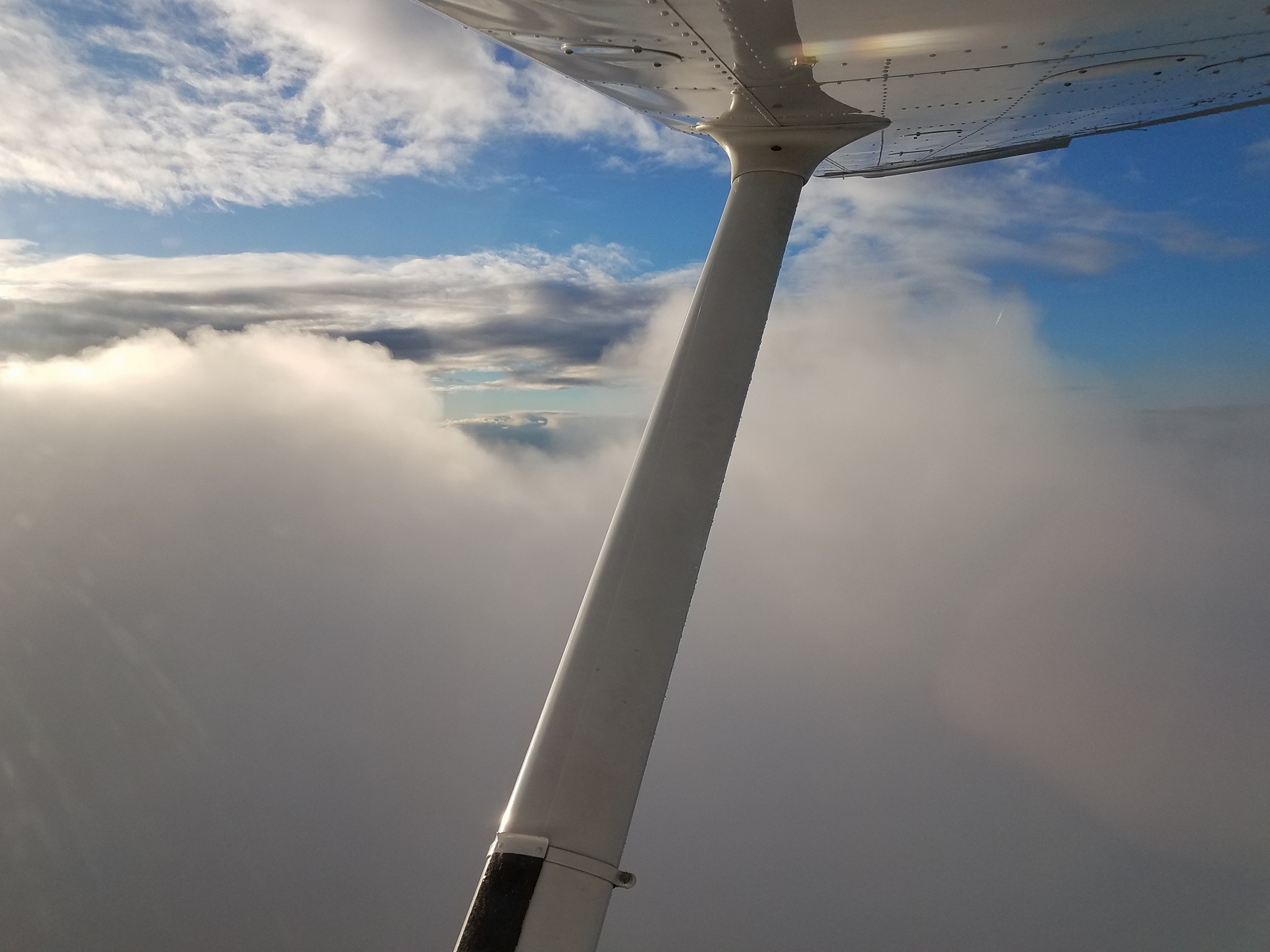
Rabbit Speed or Turtle Speed
Single Pilot IFR Workload Management
October 2017
You’re humming along at four thousand feet with twenty minutes before you reach your destination airport. The foggles you’re wearing seem to do a better job of shielding your memory rather than the view outside. “What am I forgetting? I did the cruise checklist. I have the weather. I briefed the approach. What am I forgetting?” Your confidence hasn’t reached the level where you feel comfortable enough to kick back and relax. Suddenly, ATC instructs you to join the final approach course and clears you for the approach. “But I had twenty minutes to go,” your brain screams. Now you’re in it! Everything is collapsing around you and your attention is darting up, down, left, and right.
Single Pilot IFR is how we have all been introduced to instrument flying. During a lot of the training it sucks. Things surprise you, and they do so frequently. What you learned from the previous lesson will inevitably blur into the next lesson. “When will I ever catch a break or actually feel prepared?!” Most of us know the childhood story of the tortoise and the hare – the moral being slow and steady wins the race – but it’s hard to imagine it working on an IFR flight. Rest assured, it can and it does! The key is knowing where the breaks are and how to exploit them.
Imagine a typical instrument flight profile in which you depart your home airport, fly to a satellite airport where you shoot an approach, go missed, and hold. Let’s say it takes a total of thirty minutes from wheels up to established in the hold. Fairly typical for most of us in the training environment, right? You do as much on the ground before takeoff as you can – as you’ve learned from previous experience. However, the minute you’re told to contact departure it all seems to come crashing down. “Climb and maintain four thousand, advise information Quebec, and say approach request,” says ATC in a mockingly casual manner. This typical instruction from ATC can send you into a tizzy. Your mind races as you struggle to even contemplate what to do next. Pause, think, and come back as cool as a cucumber with “Four thousand, getting Quebec, vectors ILS missed and hold.” There is no need to rush anything and, honestly, all that is required of you at the moment is to continue your climb to four thousand. Flying the plane takes precedence above all else. Think of the rest as a reminder for your cockpit to-do list.
Remaining patient, calm, and collected is probably the toughest aspect of instrument flying. The sense of “what am I forgetting” is always going to be creeping into your mind. To fight that nagging feeling, it is encouraged to memorize the image below and what it means.
 The green areas represent time. Time in which you can accomplish tasks. You can accomplish tasks during these areas because they are steady state moments in the flight. Remember that ATC instruction on initial contact during climb-out? Your mind may initially think you only have 30 seconds to complete it all. In actuality, you have nearly 12-18 minutes of the entire 30-minute flight to complete all your tasks before you begin your final approach. Yes, there are interruptions, but they can be considered part of your task list.
The green areas represent time. Time in which you can accomplish tasks. You can accomplish tasks during these areas because they are steady state moments in the flight. Remember that ATC instruction on initial contact during climb-out? Your mind may initially think you only have 30 seconds to complete it all. In actuality, you have nearly 12-18 minutes of the entire 30-minute flight to complete all your tasks before you begin your final approach. Yes, there are interruptions, but they can be considered part of your task list.
The red areas are times when you only fly the plane and navigate. These are critical areas that require your full attention with eyes on the instruments. Any tasks, ATC requests, briefings, etc. should all be minimized if not eliminated. To help identify where these red areas are, consider the “Rule of Two”.
The “Rule of Two” (patent pending) requires the pilot to stop all outlying tasks and focus solely on flying the plane and navigating. For altitudes, anytime you are within 200 feet of a level off (climb or descent) you stop what you’re doing and fly. For waypoints, anytime you are within 0.2NM of a fix regardless of a change in course or remaining on the same course, you stop what you’re doing, fly and navigate. For vectors, anytime you are within 20 degrees of an assigned heading rollout you stop what you’re doing and fly. Altitudes, waypoints, and headings are all areas that can bite you if you are distracted. Obviously, as you advance to faster planes the “Rule of Two” may evolve to the “Rule of Five, Eight, or Ten”, but the concept is the same.
You may notice in the image that a giant red circle lays over the final descent on an approach. This is intentional. If you are doing checklists, programming, trying to look up what your DA is during this phase, it is an error. These all should have been accomplished before the FAF. Your goal on every approach is to utilize the green areas to accomplish tasks so you can be as accurate and safe as possible during the critical phase of flight.
Adopting the “Rule of Two” and knowing what phases of flight to accomplish tasks will make a marked impact on your ability to manage an IFR flight as a single pilot. It will increase your situational awareness, calm your nerves, and catch mistakes.